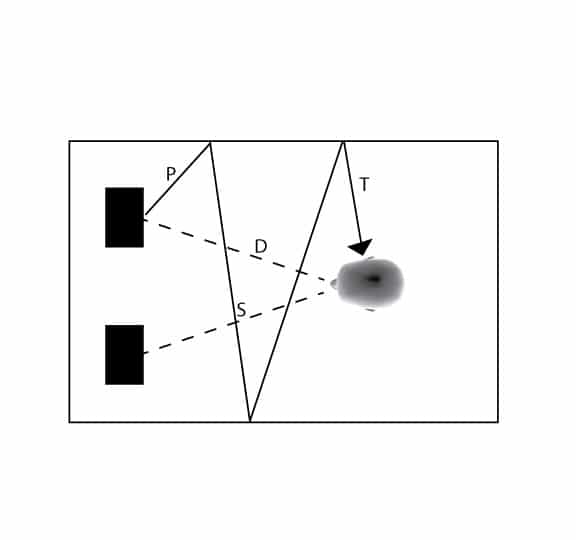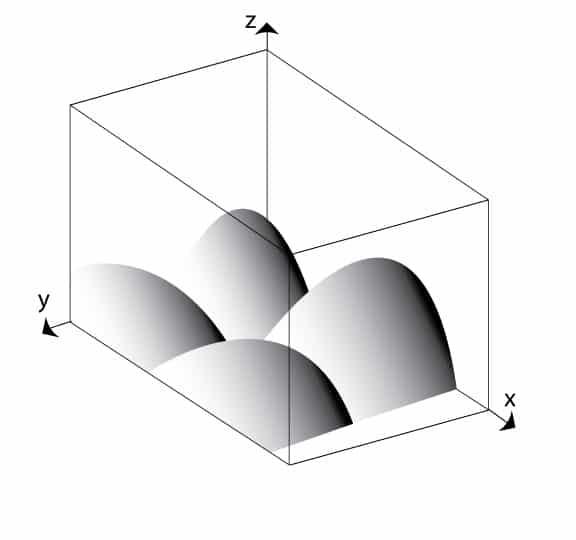When you listen to music in a concert hall, you are hearing music and room sound. Room sound is the room reflections from the room’s surfaces. The quality of the concert hall sound is a blend of music and the room. Great concert halls or those known for their sound quality, have a certain way of treating or not treating reflected energy to achieve their particular concert hall sound. All of this concert hall sound is based upon human hearing’s perceptions when it comes to sound direction and the space it occupies. Lets examine localization or the ability to locate sounds through room reflections.
Room Reflections
There are two main components to localization. They are direction and distance. Direction or localization is the brain’s way of finding the source of the sound and identifying where it originated from. Since our ears are located on a more horizontal plane by being on the sides of our heads, we as humans are much better at localizing in azimuth than we are in elevation. Elevation is out of our hearing plane. Ever try locating an airplane as it flies overhead? Room reflections work in mostly the horizontal or lateral planes.
Sound Location
In our musical rooms, we locate sound through room reflections. This process is known as the precedence effect. This is a process that is created within our brains and can be different in many situations. The space in which we listen can have a dramatic impact on precedence effect but our brains have the ability to distinguish direct from reflected energy from room boundary surfaces. This is a higher functioning brain process that can vary with room and numerous other conditions not to mention one’s state of mind at the time of perception.
Distance And Speed
Distance and the speed of sound travel are what reflections in our rooms is all about. Distance and the speed of sound all play into the same cognitive functions that are involved with the precedence effect. With this distance recognition skill set coordinated with the speed or timing of sound, we have a localization system that has been developed over centuries and works well even in small room environments. The speed of sound and the room reflections, all contribute to this effect.
Spaciousness
We all seek “air” or “spaciousness” in our musical presentations and recordings. Spaciousness has two major components to it. There is image size and positioning along with a surrounding of the listener with the sound field created. This enveloping of the listener in sound is what most small room acoustical engineers try to accomplish with acoustical treatment. engineers try and duplicate the space in which the recording was made in the playback environment.
Timbre Changes
Timbre changes also have two major parts to them. We have our old friend comb filtering and room resonances to contend with in this section. Comb filtering as you know from past discussions, is that repetition of reflections. This back and forth of reflected energy is a time delayed version of the original reflection and thus produces many sound colorations. This comb filtering can actually produce a different pitch that is defined by the inverse timing of the delay created by the comb filter process.
Resonances
Resonances build up or load if you will within the confined spaces of our rooms. Our room is a box into which we place energy. Some of that energy will fit into our box but most will not. When it does not, we have resonances. Our rooms with all of their reflective surface boundaries fortify resonances and resonances can make our sounds richer and be complimentary to our sound fields or they can mask and cause certian sound ranges to be perceived sonically as a blur or a smearing of the original sound quality.
In Summary
I trust this post has been helpful. You can gain access to more exclusive in depth video training and tutorials on room acoustics by signing up to our mailing list here.
Thanks
Dennis









